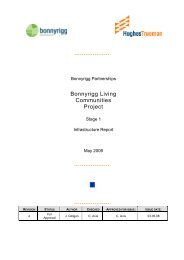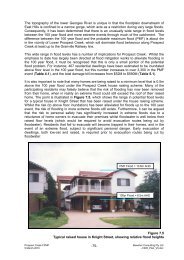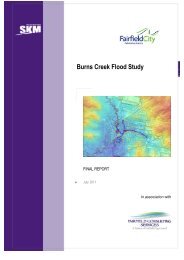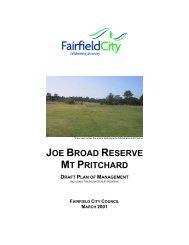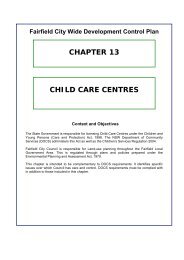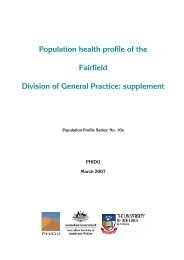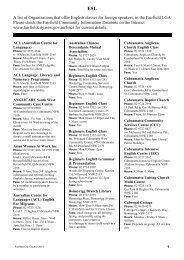Preventing Alcohol-related Harm in Australia - Department of Health
Preventing Alcohol-related Harm in Australia - Department of Health
Preventing Alcohol-related Harm in Australia - Department of Health
You also want an ePaper? Increase the reach of your titles
YUMPU automatically turns print PDFs into web optimized ePapers that Google loves.
Workplace <strong>in</strong>terventions. <strong>Australia</strong>n workplacesare another sett<strong>in</strong>g with great potential for brief<strong>in</strong>terventions with at risk dr<strong>in</strong>kers. There are twoma<strong>in</strong> rationales for workplace <strong>in</strong>terventionswith regard to the harmful consumption<strong>of</strong> alcohol: to improve productivity; and toimprove workplace safety.[7] In the <strong>Australia</strong>ncontext, approaches to workplace alcoholissues are <strong>in</strong>fluenced by occupational healthand safety laws and polices, and devis<strong>in</strong>gprevention strategies must be considered <strong>in</strong>this context. Historically, alcohol problems <strong>in</strong>the workplace have been dealt with throughemployee assistance programs (EAPs) andemployers’ policies on alcohol and drug use;however, there has been <strong>in</strong>sufficient researchto determ<strong>in</strong>e the effectiveness <strong>of</strong> EAPs <strong>in</strong>respond<strong>in</strong>g to and/or prevent<strong>in</strong>g alcoholissues <strong>in</strong> the workplace.[7] Nonetheless, EAPsdo provide the potential opportunity for<strong>in</strong>terventions that are known to be effective,such as brief <strong>in</strong>terventions for high-risk dr<strong>in</strong>kers.A recent study <strong>of</strong> alcohol consumptionby <strong>Australia</strong>n workers and the impact onabsenteeism has po<strong>in</strong>ted to the need forworkplace education to <strong>in</strong>fluence youngemployees’ attitudes and behaviours regard<strong>in</strong>galcohol use.[76] The study also suggests thatthere is a need to take a whole-<strong>of</strong>-workplaceapproach when design<strong>in</strong>g and implement<strong>in</strong>gprevention strategies that target both ‘problemdr<strong>in</strong>kers’ and workers who dr<strong>in</strong>k at short-termrisk levels, even <strong>in</strong>frequently, because thelatter have an elevated risk <strong>of</strong> alcohol-<strong>related</strong>workplace absenteeism.[76] Others havepo<strong>in</strong>ted to the need for address<strong>in</strong>g structuralfactors <strong>in</strong> the workplace as a more susta<strong>in</strong>ableprevention measure, such as reduc<strong>in</strong>g stressfulwork<strong>in</strong>g conditions that may lead to healthdamag<strong>in</strong>gbehaviour such as the harmfulconsumption <strong>of</strong> alcohol.[77]<strong>Alcohol</strong> problem treatment. Internationally, andparticularly <strong>in</strong> <strong>Australia</strong>, the evidence base withregard to the treatment <strong>of</strong> alcohol problems isvery well developed and is now at the stage<strong>of</strong> determ<strong>in</strong><strong>in</strong>g what is best practice ratherthan attempt<strong>in</strong>g to determ<strong>in</strong>e if treatmentcan work.[7] Effective alcohol treatmentoptions <strong>in</strong>clude motivational <strong>in</strong>terview<strong>in</strong>g, brief<strong>in</strong>terventions, social skills tra<strong>in</strong><strong>in</strong>g, communityre<strong>in</strong>forcement approach, relapse preventionand some aversion therapies.[7] There isevidence that mutual help programs such as12-Step Facilitation Therapy, which encouragesattendance at <strong>Alcohol</strong>ics Anonymous (AA)meet<strong>in</strong>gs, are particularly effective for severelydependent dr<strong>in</strong>kers with low levels <strong>of</strong> socialsupport.[7] Although popular and widelyused, there are also treatments that have littleevidence <strong>of</strong> efficacy, <strong>in</strong>clud<strong>in</strong>g <strong>in</strong>sight-orientatedpsychotherapy, confrontation counsell<strong>in</strong>g,relaxation tra<strong>in</strong><strong>in</strong>g, general ‘alcoholismcounsell<strong>in</strong>g’, education and milieu therapy.[7]Pharmacotherapies for alcohol dependence<strong>in</strong>clude disulfiram, naltrexone and acamprosate.Reviews have found that naltrexone andacamprosate are the safest and most effective<strong>of</strong> the three pharmacotherapies <strong>in</strong> the longand <strong>in</strong>termediate terms, respectively.[7]Thiam<strong>in</strong>e supplementation. A uniquepreventative measure to address the risk <strong>of</strong>serious bra<strong>in</strong> damage from thiam<strong>in</strong>e deficiency(known as Wernicke-Korsak<strong>of</strong>f’s syndrome)that can result from heavy consumption <strong>of</strong>alcohol over many years, along with poornutrition, is thiam<strong>in</strong>e supplementation. S<strong>in</strong>ce1991, all bak<strong>in</strong>g flour <strong>in</strong> <strong>Australia</strong> has beensupplemented with thiam<strong>in</strong>e as a universalmethod to <strong>in</strong>crease thiam<strong>in</strong>e levels <strong>in</strong> the diet<strong>of</strong> at risk populations.[7] This is <strong>in</strong>cluded hereas an example <strong>of</strong> a preventative measurethat requires ongo<strong>in</strong>g consideration, as therehas s<strong>in</strong>ce been advocacy for the removal <strong>of</strong>supplements (<strong>in</strong>clud<strong>in</strong>g thiam<strong>in</strong>e) by the purefood advocates and there is concern that thereach <strong>of</strong> thiam<strong>in</strong>e <strong>in</strong> bakers flour might not bethe most cost-effective population measure <strong>in</strong>prevent<strong>in</strong>g this condition.[78]S<strong>in</strong>ce the 1980s, sober<strong>in</strong>g-up centres havebeen established <strong>in</strong> many parts <strong>of</strong> <strong>Australia</strong>,particularly Indigenous communities, ashumane forms <strong>of</strong> care for publicly <strong>in</strong>toxicated<strong>in</strong>dividuals, and as an alternative to <strong>in</strong>dividualsbe<strong>in</strong>g arrested and held <strong>in</strong> police cells andwatch houses.[34]29




